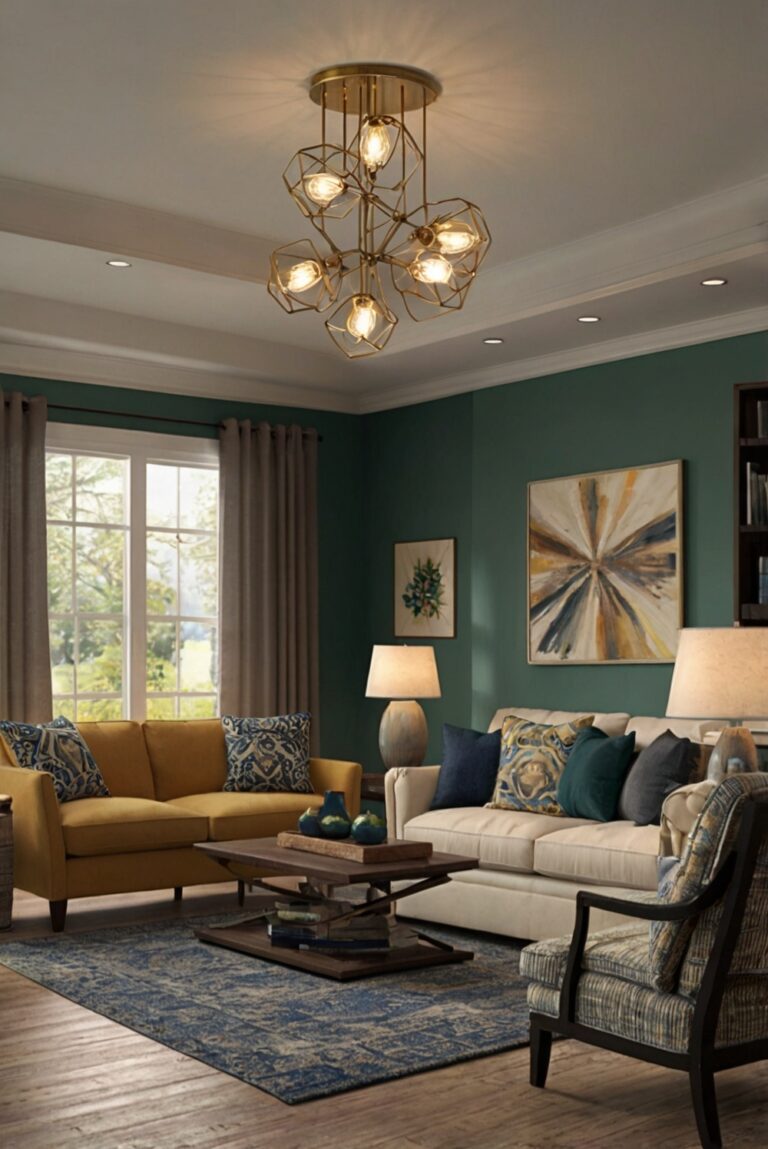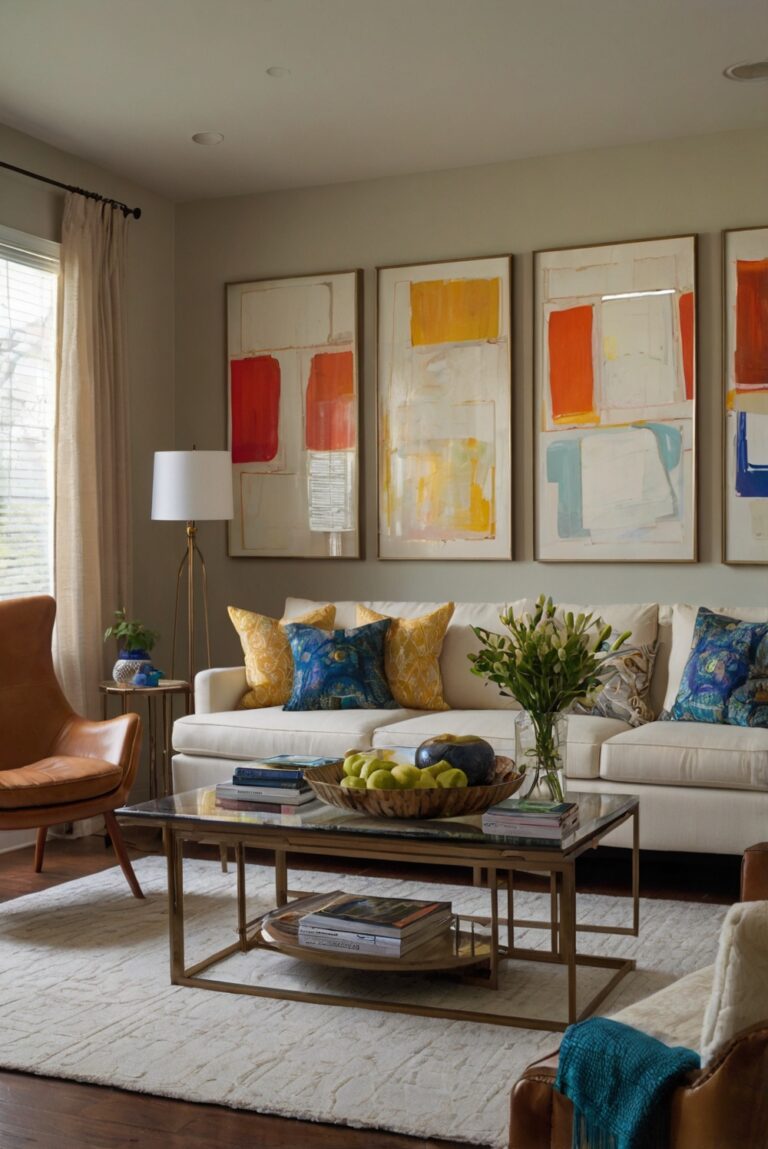Discover how strategic lighting choices can enhance the functionality of your living room. Explore daily routines and décor tips for a brighter, more inviting space.
**How can you use lighting to improve the functionality of your living room?**
Add stylish floor lamps or table lamps for task lighting and ambiance. Use dimmer switches to control the intensity of light according to the time of day. Consider pendant lights with adjustable heights for a focal point. Incorporate LED strips under shelves or cabinets to provide indirect lighting. Opt for wall sconces to save floor space. Ensure proper balance between natural and artificial lighting. Use warm lights for a cozy feel and cool lights for a modern look. Highlight artwork or decor pieces with spotlights. Arrange furniture strategically to avoid glare. Incorporating these lighting elements will enhance both the functionality and aesthetics of your living room.
How can you use lighting to improve the functionality of your living room?
Lighting plays a crucial role in enhancing the functionality and ambiance of your living room. By strategically choosing and placing different types of lighting, you can create a space that is not only visually appealing but also practical and efficient.
Strategic Placement:
The first step in using lighting to improve your living room’s functionality is to strategically place light fixtures. Consider the different areas of the room that require lighting, such as reading corners, entertainment areas, or workspaces. By placing floor lamps, table lamps, or wall sconces in these specific areas, you can ensure that every corner of the room is well-lit and serves its purpose effectively.
Varying Light Levels:
Another important aspect of lighting design is to vary the light levels in your living room. Different activities may require different levels of lighting. For example, you may need bright overhead lighting for cleaning or working, while softer ambient lighting may be more suitable for relaxation or movie nights. By incorporating dimmable lights or using lamps with adjustable brightness, you can easily create the right atmosphere for any occasion.
Layered Lighting:
Layered lighting involves using a combination of ambient, task, and accent lighting to create a well-balanced and functional space. Ambient lighting provides overall illumination, task lighting focuses on specific activities, and accent lighting highlights decorative elements or architectural features. By combining these three layers of lighting, you can achieve a harmonious and versatile lighting scheme that enhances both the functionality and aesthetics of your living room.
Choosing the Right Fixtures:
When selecting light fixtures for your living room, consider both the design and functionality of the fixtures. Opt for fixtures that complement your existing decor style while also providing the necessary light output for each area of the room. Pendant lights, track lighting, recessed lights, and chandeliers are popular choices that can add character and functionality to your space.
Smart Lighting Solutions:
Incorporating smart lighting solutions can further enhance the functionality of your living room. Smart bulbs, dimmer switches, and lighting controls allow you to adjust the lighting levels, colors, and schedules with ease. You can create preset lighting scenes for different activities or moods, such as movie night, reading time, or entertaining guests. Smart lighting not only adds convenience but also helps you save energy and create a more comfortable living environment.
In conclusion, by strategically placing light fixtures, varying light levels, using layered lighting techniques, choosing the right fixtures, and incorporating smart lighting solutions, you can effectively improve the functionality of your living room while enhancing its overall aesthetic appeal. Lighting is a powerful tool that can transform your space into a versatile and inviting environment that meets your specific needs and preferences.
1. What are the different types of lighting you can use in your living room to enhance functionality?
In your living room, you can use a combination of ambient, task, and accent lighting to improve functionality. Ambient lighting provides overall illumination, task lighting is ideal for specific activities like reading or working, and accent lighting highlights architectural features or decor. By incorporating these different types of lighting, you can create a well-lit space that is both functional and visually appealing.
2. How can you optimize natural light in your living room to enhance functionality?
You can optimize natural light in your living room by keeping windows unobstructed, using light-colored curtains or blinds to let in more light, and strategically placing mirrors to reflect natural light. Natural light not only improves visibility but also enhances the mood and ambiance of your living room, making it a more inviting and functional space.
3. What are some lighting design tips to consider when improving the functionality of your living room?
When improving the functionality of your living room with lighting, consider factors such as the room’s size, layout, and purpose. Use a mix of overhead, task, and accent lighting to create a well-balanced lighting scheme. Dimmer switches can also be useful for adjusting light levels based on different activities or times of day. Additionally, choosing energy-efficient LED bulbs can save on electricity costs while providing quality lighting.
4. How can you create a cozy atmosphere in your living room using lighting?
To create a cozy atmosphere in your living room, consider using warm-toned light sources such as incandescent or LED bulbs with a lower color temperature. Soft, diffused lighting can help to make the space feel more inviting and comfortable. You can also incorporate lighting fixtures like floor lamps or table lamps with adjustable shades to direct light where needed, creating a cozy and functional environment for relaxation and socializing.
5. What are some common lighting mistakes to avoid when trying to improve the functionality of your living room?
When trying to improve the functionality of your living room with lighting, avoid common mistakes like using only overhead lighting, neglecting task lighting for specific activities, or using bulbs with a color temperature that is too harsh or cold. It’s important to consider the different lighting needs of the space and how to best address them with a combination of lighting sources and fixtures. By avoiding these mistakes, you can create a well-lit and functional living room that meets your needs and enhances your overall enjoyment of the space.






